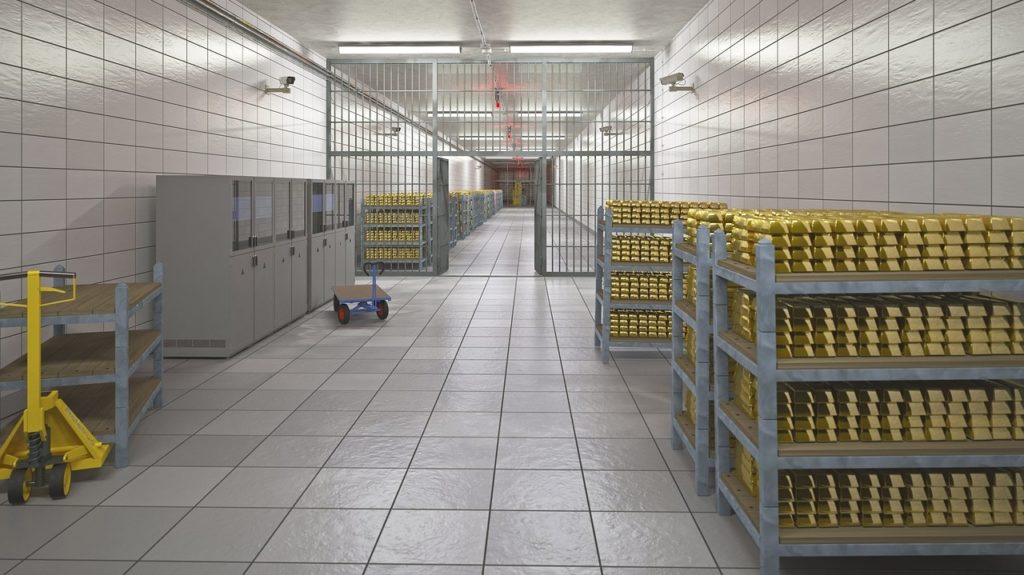Central Bank Gold Buying Hit Historically High Levels in the Third Quarter

Central banks added nearly 400 tons of gold in the third quarter, according to data compiled by the World Gold Council.
This was 300% higher than Q3 2021 and came in as the largest quarterly increase in central bank gold reserves since the World Gold Council started keeping records in 2000.
The 393.3-ton net increase in central bank gold reserves in Q3 pushed the total for 2022 to 673 tons. That’s higher than any annual increase in central bank gold purchases since 1967 with an entire quarter remaining.
According to the World Gold Council, the official central bank gold demand in Q3 was the combination of reported purchases and a substantial estimate for “unreported buying.”
This is not uncommon as not all official institutions publicly report their gold holdings or may do so with a lag. It’s also worth noting that while Metals Focus suggests purchases occurred during Q3, it’s possible they may have started earlier in the year. In turn, this may result in future revisions as more information becomes available.”
Turkey ranks as the largest reported gold buyer this year. The country has been dealing with a currency crisis, with the Turkish lira falling by 52%. The Turkish central bank added 31 tons of gold to its reserves in the third quarter. Year-to-date Turkey has added 95 tons of gold to its hoard. Its gold reserves now stand at 489 tons, making up 29% of its total reserves.
Uzbekistan was another big buyer in the third quarter. It added 26 tons to its reserves, bringing its year-to-date total to 28 tons. Uzbekistan charted this significant increase despite having begun the year by selling almost 25 tons in the first quarter.
Kazakhstan added over six tons of gold in September, but that was not enough to make up for the 11-ton sale in July. It ended up the largest net seller in Q3 with a 2-to reduction in its gold holdings.
It is not uncommon for banks that buy from domestic production – such as Uzbekistan and Kazakhstan – to switch between buying and selling.
The Reserve Bank of India added another 17 tons of gold to its holding in Q3, despite recording no purchases in August. India has been steadily adding to its reserves since 2017. Since then, the Indian central bank has purchased over 200 tons of gold. In August 2020, there were reports that the RBI was considering significantly raising its gold reserves further.
Qatar was the biggest gold buyer in July with an addition of 14.8 tons added to its reserves. That appears to be its largest monthly acquisition on record dating back to 1967. Preliminary data published by the Qatar Central Bank suggests a further addition to its gold reserves during August and September, but the data has not been reported to the IMF IFS database.
Mozambique was a new buyer in Q3 with a 2-ton purchase. The Philippines (2 tons) and Mongolia (1 ton) were also buyers during the last quarter.
Mystery buyers bought a substantial amount of gold in the third quarter. Central banks that often fail to report purchases include China and Russia. For example, many analysts believe China holds far more gold than it officially reveals. As Jim Rickards pointed out on Mises Daily back in 2015, many people speculate that China keeps several thousand tons of gold “off the books” in a separate entity called the State Administration for Foreign Exchange (SAFE).
Why are central banks stocking up on gold? Bloomberg offers one explanation.
Bullion does have one crucial advantage: unlike bonds, it doesn’t bind you into a relationship with an unreliable counterparty. … In a world where you can trust no one, it makes sense to bulletproof yourself with metal.”
Central banks added 463 tons of gold to global reserves in 2021. That was 82% higher than in 2020.
A WGC survey found that “gold’s performance during a time of crisis and its role as a long-term store of value/inflation hedge are key determinants in the decisions of central banks to hold it.”
Last year was the 12th consecutive year of net purchases. Over that time, central banks have bought a net total of 5,692 tons of gold.
After record years in 2018 and 2019, central bank gold-buying slowed in 2020 with net purchases totaling about 273 tons. The lower rate of purchases in 2020 was expected given the strength of central bank buying both in 2018 and 2019. The economic chaos caused by the coronavirus pandemic has also impacted the market.
Central bank demand came in at 650.3 tons in 2019. That was the second-highest level of annual purchases for 50 years, just slightly below the 2018 net purchases of 656.2 tons. According to the WGC, 2018 marked the highest level of annual net central bank gold purchases since the suspension of dollar convertibility into gold in 1971, and the second-highest annual total on record.
Call 1-888-GOLD-160 and speak with a Precious Metals Specialist today!
Buka akaun dagangan patuh syariah anda di Weltrade.
Source link







